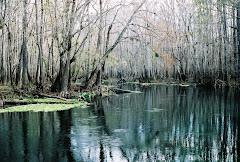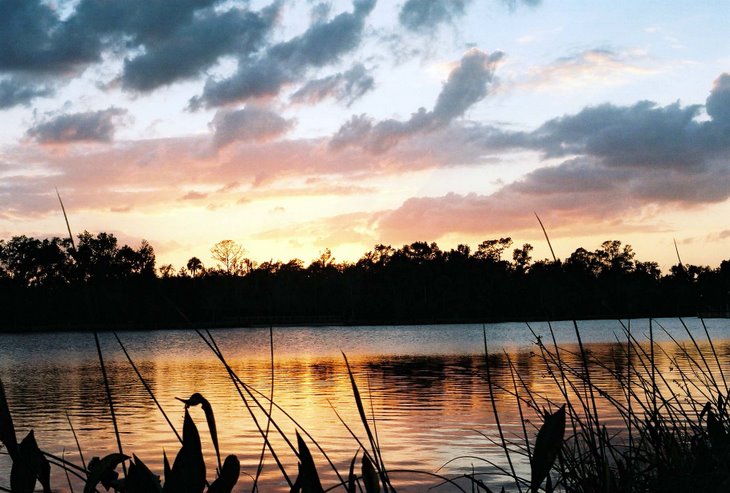The Florida National Scenic Trail starts at the Alabama state line and meanders southward into the Big Cypress National Preserve where solid ground finally gives way to the watery vastness of the Everglades. Travel beyond Big Cypress requires some sort of boat and a whole lot of guts and guile.
We set out to explore two separate sections of the trail this week, one in Seminole County and the other in Orange County, which showcased a diverse set of terrain as well as encounters with a wide variety of wildlife.
Our first hike was in the Little Big Econ State Forest in Seminole County where the trail follows along the steep bluffs of the beautiful Econlockhatchee River (now you know why they just call it the Econ for short). This clear flowing, spring fed stream was brimming with fish as well as bald eagles that were hunting for them in the cool crystalline waters. The next time we hike this section of the trail I'm bringing a fishing pole.

Limpkin (Aramus guarauna)
 The Econlockhatchee as seen from atop a high river bluff.
The Econlockhatchee as seen from atop a high river bluff.The second section we hiked was in the Tosohatchee Wildlife Management Area, which is located in the dense bottom land swamp forests along the St. John's River in eastern Orange County. This segment of the trail was very wild and somewhat spooky due to the remoteness of the location and the omnipresent and dense vegetation that seemed to close in around us wherever we hiked. There was lots of wildlife, especially alligators, tucked away in the thick fastness of this mixed hardwood, cypress and palm forest wilderness. We were sort of glad to emerge unscathed from this place.


This gator blended in too well for comfort.

The Florida Trail winds through a dense palm jungle.

Juvenile barred owl (Strix varia)

Golden silk spider (Nephila clavipes)

Back to the Jurassic

A large Florida woods cockroach (Eurycotis floridana)

A gator checks us out deep in the wilds of the Tosohatchee.


This gator blended in too well for comfort.

The Florida Trail winds through a dense palm jungle.

Juvenile barred owl (Strix varia)

Golden silk spider (Nephila clavipes)

Back to the Jurassic

A large Florida woods cockroach (Eurycotis floridana)

A gator checks us out deep in the wilds of the Tosohatchee.
The Florida Trail is easy to access throughout its entire length and there is a great website to help would be hikers plan an excursion: www.floridatrail.org/
Have fun out there kids, but be careful.
Have fun out there kids, but be careful.


















































